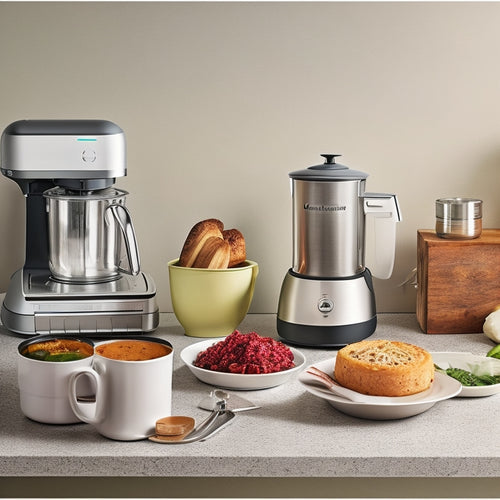
Master the Art of Clothes Organization
Share
You're about to transform your closet into a space that not only looks amazing but also saves you time and reduces stress. Start by categorizing your clothes into broad groups, identifying closet essentials, and making intentional purchasing decisions. Assess your storage space and create a functional system that maximizes it. Then, implement intentional categorization, utilizing vertical space and storing out-of-season clothes in labeled bins. Arrange your clothes strategically for easy access, focusing on visibility, color, and practicality. As you apply these strategies, you'll discover a more streamlined daily routine, and a closet that's both beautiful and functional - and that's just the beginning of your organized closet journey.
Key Takeaways
• Categorize clothing into broad groups (tops, bottoms, dresses, outerwear, accessories) to create a solid foundation for organization.
• Focus on visibility, color, and practicality when organizing clothes to ensure a strategic arrangement.
• Utilize vertical space for storage efficiency and keep frequently worn items at eye level for easy access.
• Store out-of-season clothes in labeled bins to free up space and reduce clutter.
• Implement intentional categorization and optimize visibility to create a functional storage system that works for you.
Building a Solid Foundation
To build a solid foundation for your clothes organization system, start by categorizing your clothing into broad groups based on type, such as tops, bottoms, dresses, outerwear, and accessories. This will help you identify your closet essentials and determine what functional storage solutions you need.
By grouping similar items together, you'll be able to see what you have and what's missing, making it easier to make intentional purchasing decisions. You'll also be able to assess your storage space and determine the most effective way to use it.
With a clear understanding of your clothing categories, you'll be able to create a functional storage system that makes the most of your space and makes getting dressed easier than ever.
Organizing With a Purpose
Now that you've categorized your clothing into broad groups, you're ready to organize them with a purpose, focusing on visibility, color, and practicality to create a system that makes your daily routine more efficient.
This is where functional organization and purposeful placement come into play. You're not just arranging clothes, you're creating a strategic arrangement that saves you time and effort.
Here are some tips to keep in mind:
-
Implement intentional categorization by grouping similar items together, making it easy to find what you need.
-
Use vertical space to maximize storage, keeping items that you wear frequently at eye level.
-
Store out-of-season clothes in labeled bins or containers, keeping them out of the way but still accessible.
Putting It All Together
You've categorized your clothes, maximized storage, and optimized visibility, and it's time to put your organized pieces into a cohesive system that streamlines your daily routine. To achieve this, focus on color coordination and texture pairing. Organize your clothes in a way that makes sense to you, considering factors like occasion, season, and personal style.
| Category | Color Scheme | Texture Pairing |
|---|---|---|
| Tops | Neutral tones (white, beige) | Smooth fabrics (cotton, silk) |
| Dresses | Earthy tones (brown, green) | Flowy fabrics (chiffon, lace) |
| Bottoms | Bold colors (red, blue) | Structured fabrics (denim, wool) |
| Outerwear | Dark neutrals (black, navy) | Waterproof fabrics (leather, nylon) |
| Accessories | Pastel colors (pink, baby blue) | Soft fabrics (cashmere, fleece) |
Frequently Asked Questions
How Do I Maintain My Organized Closet Over Time?
To maintain your organized closet, you'll set a seasonal refresh schedule, forming habits like regular tidying and editing your wardrobe, ensuring your space stays clutter-free and functional, with your style and preferences always on point.
Can I Apply These Principles to My Accessory Organization Too?
"Think of your accessories as a symphony orchestra, each piece playing its role. Yes, you can apply these principles to create an Accessory Station, establishing a Jewelry Hierarchy to harmonize your collection and make styling a breeze."
What if I Have Limited Closet Space for Organization?
When dealing with limited closet space, you optimize storage by using space-savvy shelving units, maximizing vertical space, and implementing multi-tiered storage solutions to efficiently utilize every inch of available space.
How Often Should I Purge My Closet of Unwanted Items?
Did you know 80% of the time, you likely wear only 20% of your clothes? You should purge your closet every 3-6 months, considering seasonal rotations and letting go of emotional attachments to items that no longer serve you.
Can These Principles Be Adapted for a Shared Closet Space?
When sharing a closet, you'll need to adopt compromise strategies and set boundaries with your partner to maintain harmony; designate separate areas for each person's clothes, and establish a system for shared storage and maintenance.
Conclusion
You've finally tamed the beast that was your closet. Like a conductor leading a symphony, you've orchestrated a system that harmonizes your clothes, making mornings a breeze.
With your newly organized space, you're no longer stuck in a rut, and your wardrobe is now a catalyst for creativity and confidence.
As you step out into the world, you're ready to take on the day, armed with the knowledge that your closet is a sanctuary, not a source of stress.
Related Posts
-

7 Best Ways to Declutter Your Digital Life
You're tired of drowning in digital clutter! To take control, start by purging unused subscriptions, and organizing y...
-

Streamline Your Small Bathroom With These Systems
You can reveal your small bathroom's hidden potential by implementing a few strategic systems that maximize every inc...
-

What Are the Best Compact Smart Kitchen Appliances?
When it comes to compact smart kitchen appliances, you'll want to prioritize energy efficiency, space-saving design, ...


